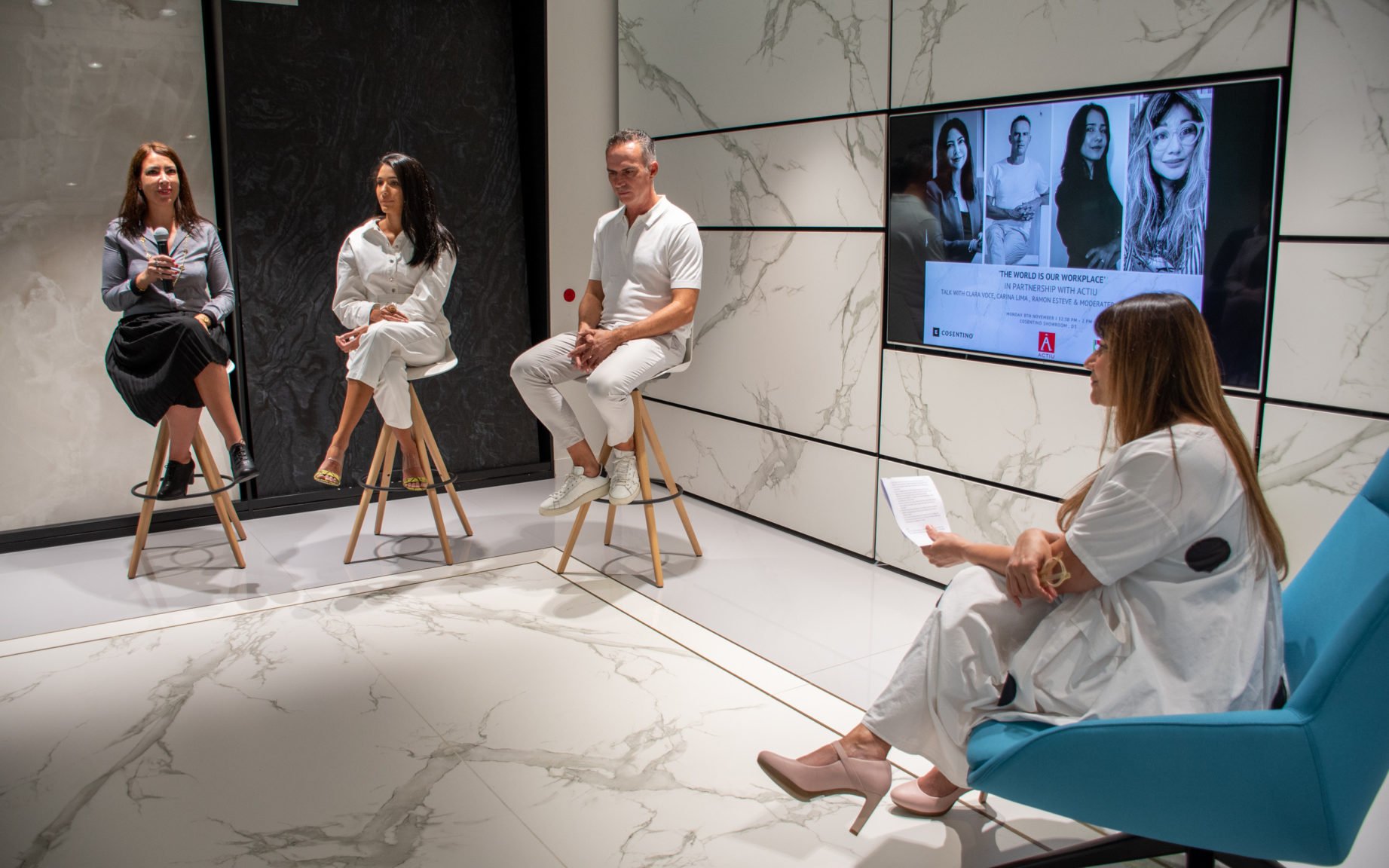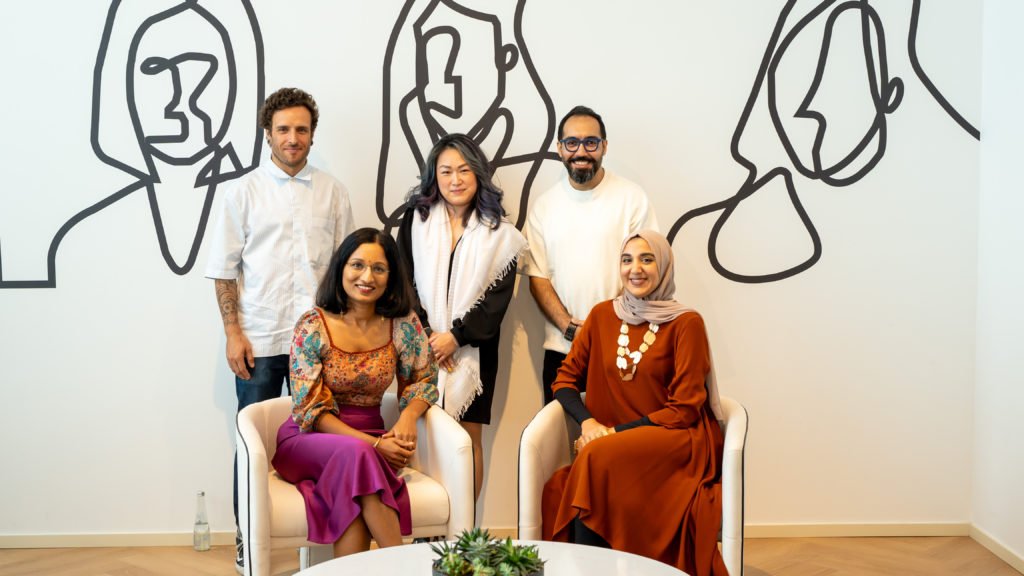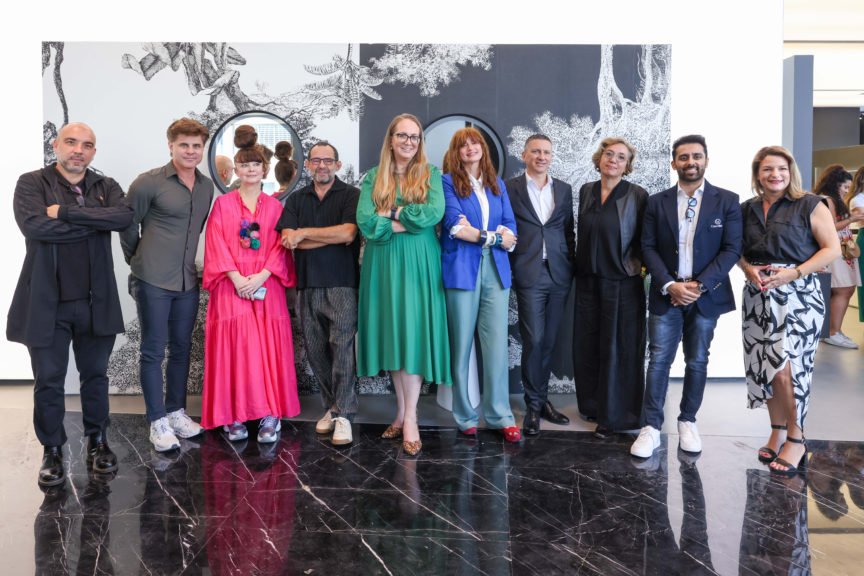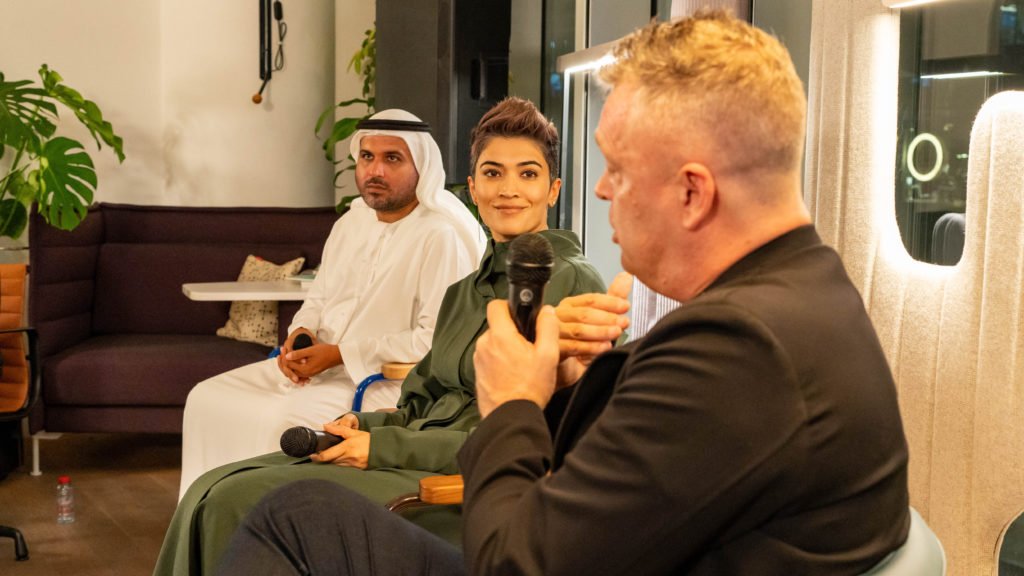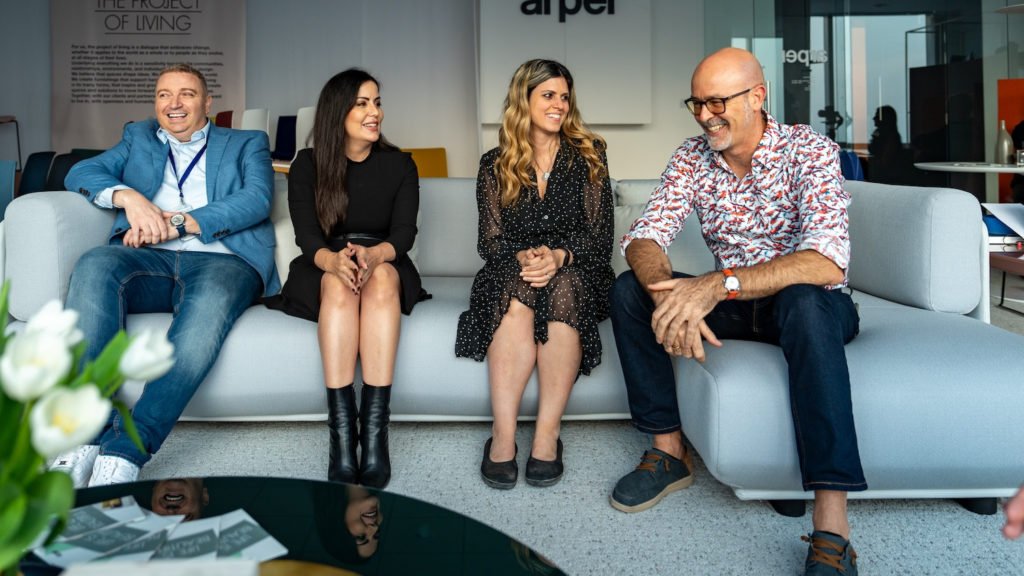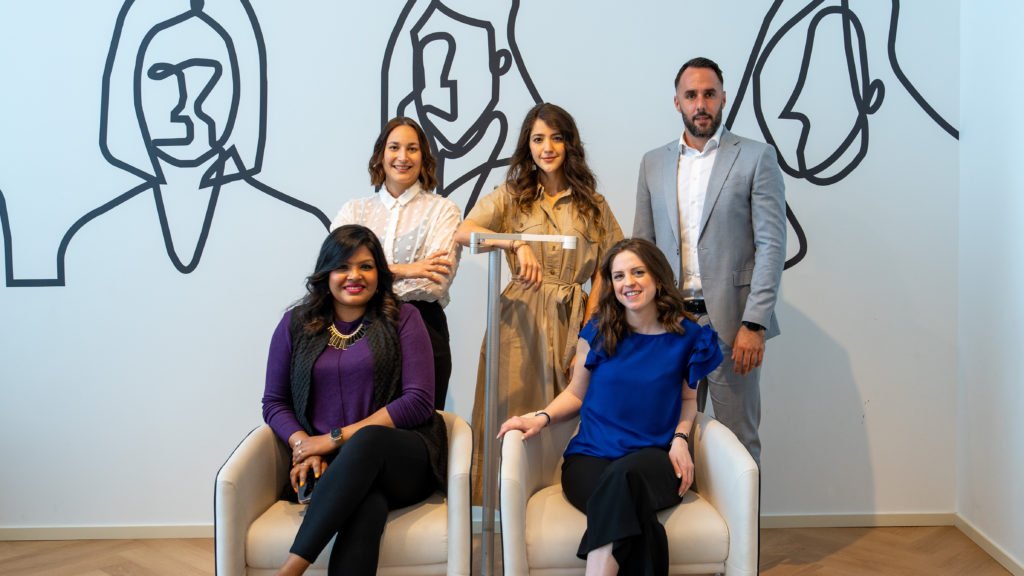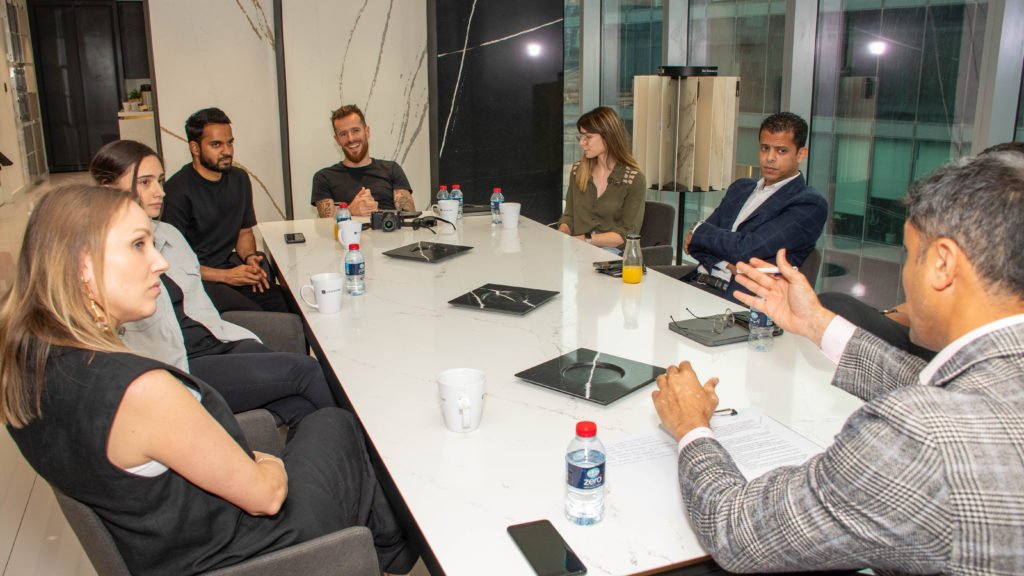Imagine a world where almost any place you desire could be your potential workspace, even if that place was your home. This post pandemic world has given us a brand new, beautiful canvas to create our own office the way we choose. In collaboration with Actiu, we hosted a panel discussion at the Cosentino showroom during Dubai Design Week, to talk about the wonder that is the new workplace.
This past year, social distancing and quarantining gave way to new methods of interacting and consequently conducting business – methods that diluted the boundaries between spaces for living, working and leisure, and inevitably fostering a new style of professional spaces within environments that, until now, had been alien to what was traditionally conceived as workspaces. The term coined for this style of living and working is ‘co-living’.
From cafes and multipurpose rooms to lobbies, waiting rooms, terraces, patios and gardens, there has never been such a wide and heterogeneous range of spaces for collaborating. In hotels, restaurants, hospitals, banks, airport terminals, schools, leisure centres, retail spaces and, of course, offices, the creators seek to recreate an atmosphere that adds value and enhances the well-being of their users through environments that are drawing increasingly closer to the collective imagination of the home.
This fusion of functionality into multiple use spaces is the origin of the co-working concept, and is evolving to the new co-living modality in the housing field, in which shared spaces reach the domestic environment. It is not uncommon for new residential constructs, such as apartment complexes in the heart of the city, to also house areas of quiet work, collaboration, rest and repose.
From left: Clara Voce, Creative Director at Pinnacle Inteirors; Carina Lima, Senior Interior Designer at SBID; Ramon Esteve, Architect, Designer and Founder at Ramón Esteve Estudio
The experts in our panel shed light on this beautiful topic, on how the use of a space has become much more complex and multidimensional, with a lot more functionality desired from a single construct. Designer Ramon Esteve is a superstar in his own right, pushing the boundaries of traditional thought in constructs. His theory of micro cities opened a whole new world for us, whereby each area of a city is a complete lifestyle experience in itself. When we pull this thought apart, we discover an endless array of benefits from living, working and habituating in a bubble space. This is not to say that one is cut off from the rest of the city. But it does help in terms of reducing personal stressors, traffic issues, unnecessary pollution, and is generally quite beneficial for the environment.
The conversation also brought up the always riveting topic of technology, more specifically data mining. In fact, one of Actiu brand’s most innovative products is a device that can sit on a desk and measure the activity and usage of a space. Imagine how useful this information would be to employers, firms, and even designers. Imagine having a workspace that is tailored to your company’s exact usage, thereby severely cutting unnecessary real estate space, energy and wastage. Carina Lima, a senior designer specialising in workspace design listed out the multiple ways in which data such as this could help her clients, particularly for D&B projects where budgets are tight and timelines are short. This information takes away a lot of guesswork.
Moving to discussing the design from an integrative and collaborative perspective, our panelists detailed the various ways in which social differences and status barriers could be removed. Clara Voce, Creative Director at Pinnacle Interiors highlighted the fact that people are at the heart of any project. Creating communal areas to live work and play, and collaborate as much as possible, is one way to tackle this issue.
In the future, the hope was to see micro cities, mini modules or bubbles that are interconnected through various roadworks, and a way to live that enhances human interaction, wellness, and focus on living, and reduces the stressors associated with distances, unnecessary travel, reduction of pollution and energy saving.

